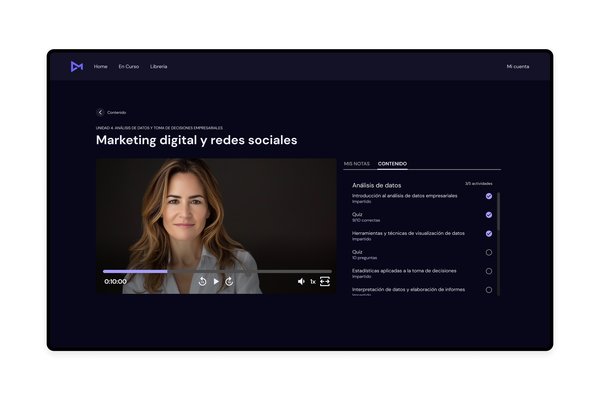Alpine.js
Modern reactivity in your HTML without the bulk of a full framework
You need a dropdown menu, a modal, some tabs. Nothing too complicated. But your framework forces you to create components, configure state, manage lifecycles… and suddenly you have 200 lines of code for something that should be trivial. Alpine.js exists because the web became unnecessarily complicated. With 15 attributes and 17KB, you regain control over your interface without sacrificing the modern development experience you love from Vue or React.
What is alpine.js?
Tailwind CSS conquered styles. Alpine.js is doing the same with behavior.
Alpine.js is a minimalist JavaScript library that lets you add reactive behavior directly to your HTML using declarative attributes. Think of it as the spiritual successor to jQuery, but with the reactivity and elegance you expect from modern frameworks.
It requires no compilation process, no bundler, and no virtual DOM. You add a 17KB script and start writing directives like x-show, x-on, and x-data directly into your markup. Your HTML comes to life.
The philosophy is deliberately the opposite of React or Vue: instead of JavaScript generating HTML, HTML incorporates the JavaScript it needs. This means your server-side templates remain server-side templates, your SEO works without any tricks, and any developer can understand what's going on just by looking at the source code.
At Mecexis, we use Alpine.js as a natural complement to our Django stack. While HTML handles communication with the server, Alpine.js takes care of all the interactivity that happens exclusively in the browser: animations, real-time validations, UI components... No APIs, no duplicate logic, no complications.

Main Advantages of Alpine.js
Not all technology decisions have to be complicated. Sometimes the best option is the simplest. These are the reasons why Alpine.js has become our choice for frontend interactivity.
-
Productivity from the First Minute
There's nothing to install, nothing to configure, nothing to compile. You add a script, write a few attributes in your HTML, and it works. A developer who's never touched Alpine.js can be productive within an hour. This means less onboarding time, less reliance on specialized skills, and greater speed in every sprint.
-
Self-Explaining Code
Look at this example: `<div x-show="open">`. You don't need documentation to understand what it does. This readability is no small detail: it reduces errors, facilitates code reviews, and allows anyone on the team to make changes without fear of breaking something. When the project goes into maintenance, you'll appreciate every line that doesn't require explanation.
-
Performance Your Users Notice
17KB. That's all Alpine.js adds to your page. Compare that to Vue's 40KB+ or React's 120KB+ with ReactDOM. On mobile devices with unreliable connections, in emerging markets, in any situation where every kilobyte counts, Alpine.js makes the difference between a website that loads and one that users abandon.
-
Live with everything you already have
Alpine.js doesn't require you to change anything in your existing stack. Using Django? Perfect. WordPress? Also great. Having a legacy PHP application? No problem. It integrates seamlessly with any server-side technology because it assumes nothing about your backend. You can add it to an existing project this afternoon without touching a single line of code that's already working.
-
The Perfect Complement for HTML
While HTML handles communication with the server, Alpine.js takes care of the interactivity that occurs exclusively in the browser. A modal opening, a menu expanding, a tooltip appearing... These are things that don't need to communicate with the backend but drastically improve the user experience. Together, they form a complete frontend stack without the complexity of a Single-Page Application (SPA).
-
Active Community and Excellent Documentation
Behind Alpine.js is a growing community and documentation that is exemplary in its clarity. Problems are solved quickly, patterns are well documented, and learning resources are plentiful. You're not betting on an experimental technology; you're choosing a proven and future-proof tool.

Ideal use cases for Alpine.js
Alpine.js fits where large frameworks fall short
- Corporate websites that need uncomplicated interactivity
- Landing pages with dynamic forms and animated elements
- Administration panels with filters, tabs, and collapsible components
- E-commerce with variant selectors, galleries, and interactive shopping carts
- Any project where you want fast results without technical debt
Technical Specifications
Alpine.js offers a carefully selected set of tools to cover real web interactivity needs, without adding unnecessary complexity.
-
Declarative Directives
Fifteen directives like x-data, x-show, x-bind, and x-on let you define behaviors directly in the HTML. No separate files, no imports, no configuration. The code lives where it's used, making the relationship between structure and behavior immediate and obvious.
-
Automatic Reactivity
Define a state with x-data and Alpine.js will automatically update the DOM when that state changes. No manual calls to rendering functions, no explicit subscription management. You change a variable, the interface updates. It's that simple.
-
Lightweight Component System
For recurring patterns, Alpine.js lets you define reusable components with Alpine.data(). You encapsulate logic, register it once, and use it anywhere in your application. You get the organization of a component framework without its bulk or learning curve.
-
Transitions and Animations
The x-transition directives allow you to add entrance and exit animations to any element with a single line of code. Fades, slides, scaling... Effects that normally require additional libraries or complex CSS are now handled by default.
-
Global Stores
For state that needs to be shared between different components, Alpine.store() offers a reactive global store. Notifications, user preferences, session data... All accessible from anywhere on the page without coupling or prop drilling.
-
Plugins and Extensibility
The official plugin ecosystem adds features such as localStorage persistence, input masks, Intersect Observer integration, and focus management. And if you need something specific, the plugin API allows you to extend Alpine.js with your own directives.
Why choose Mecexis as your partner in Alpine.js
More than a decade creating web interfaces that work
-
1
We know when to use it and when not to.
-
Not all solutions fit every problem. Our experience allows us to quickly identify whether Alpine.js is the right tool for your project or if you need something else. This honesty saves you time, money, and frustration. We won't sell you Alpine.js if you need something else.
-
2
Seamless Integration with the Backend
-
Alpine.js truly shines when paired with a well-built backend. Leveraging our Django expertise, we design architectures where the frontend and backend seamlessly complement each other. Data flows naturally, validations are avoided, and the resulting code is consistent from start to finish.
-
3
Production-Proven Patterns
-
We've implemented Alpine.js in real-world projects with real users. We know which patterns scale, how to structure code for maintainability, and what common mistakes to avoid. We don't experiment with your project; we apply what we already know works.
-
4
Full Stack, Full Delivery
-
Alpine.js is one piece of the puzzle. We deliver the complete puzzle: Django backend, client-server interactivity with HTML if needed, UI behavior with Alpine.js, styling with Tailwind, and deployment on cloud infrastructure. One team, one responsibility, one project that works.
We use Alpine when using Vue would be like using a cannon to kill flies. Which is more often than the industry wants to admit.
